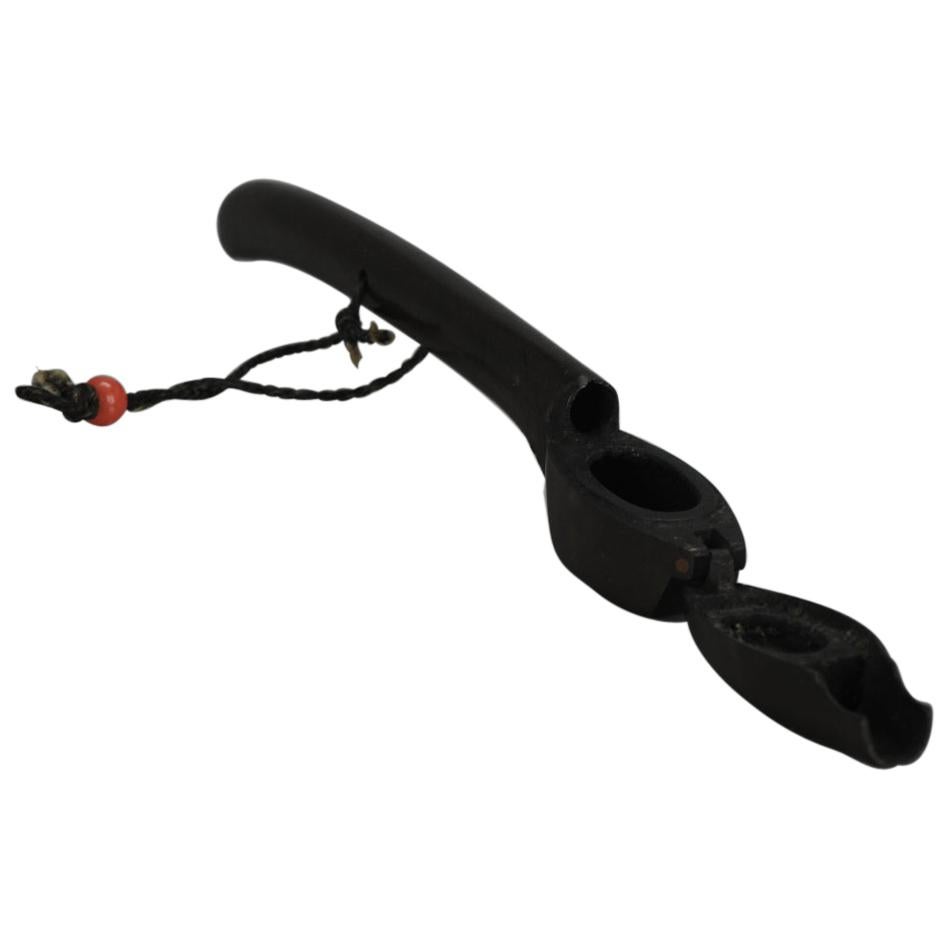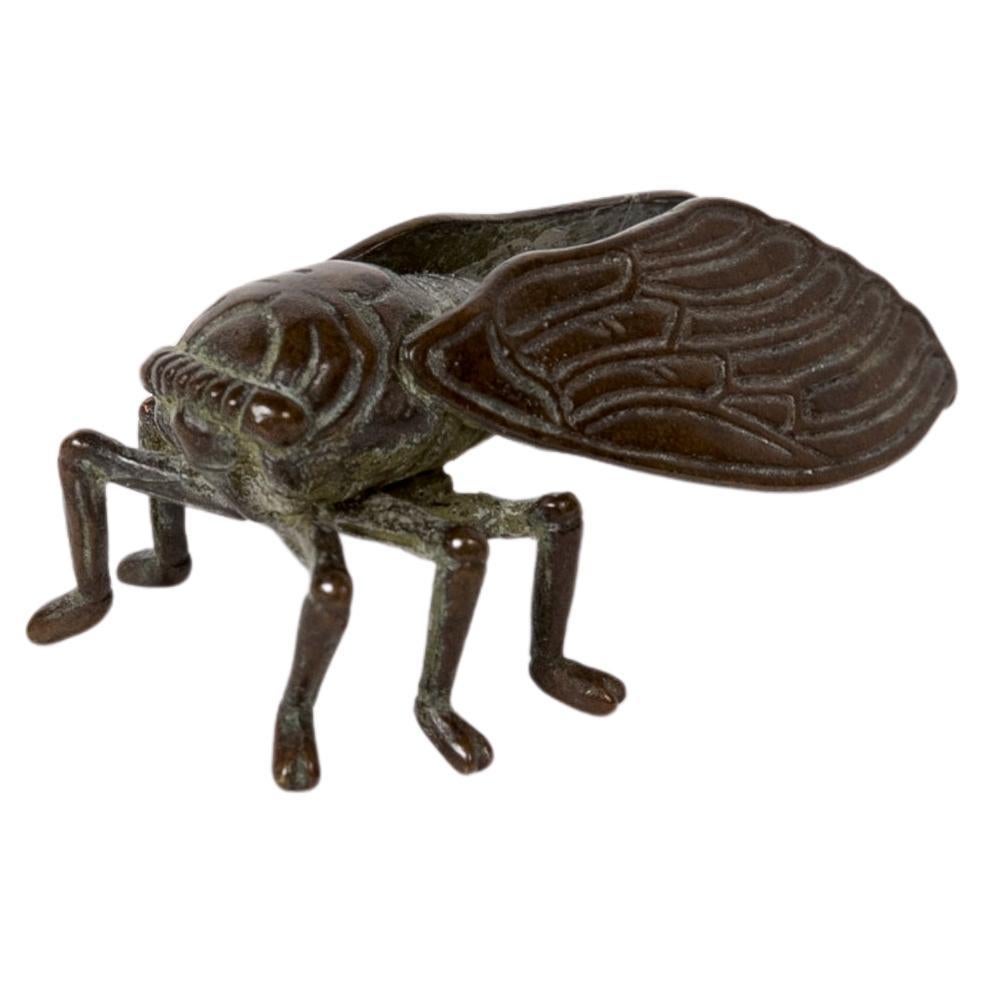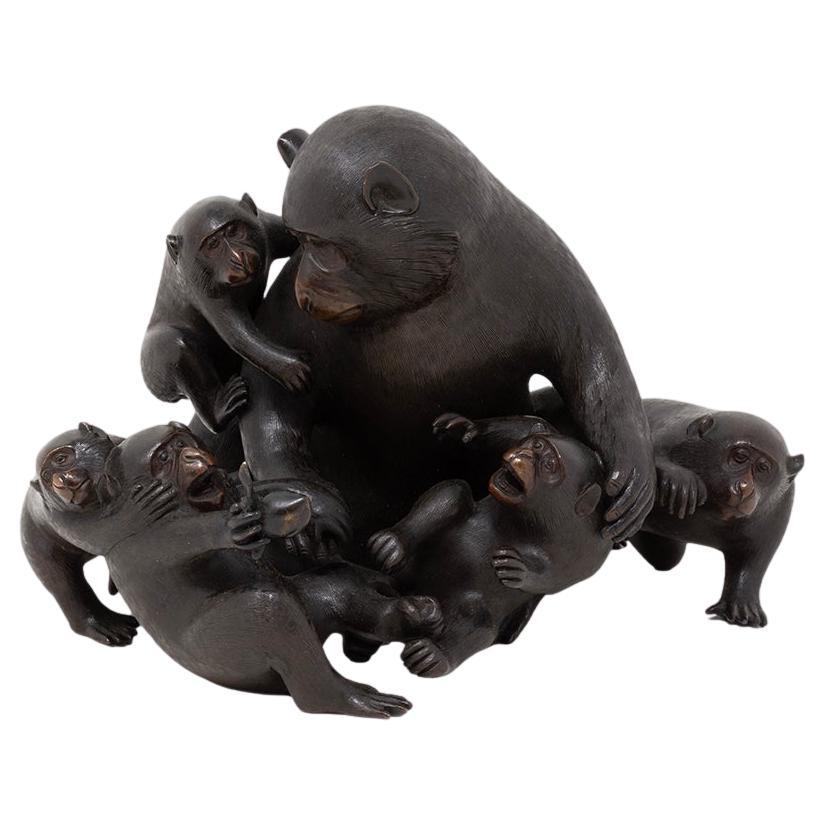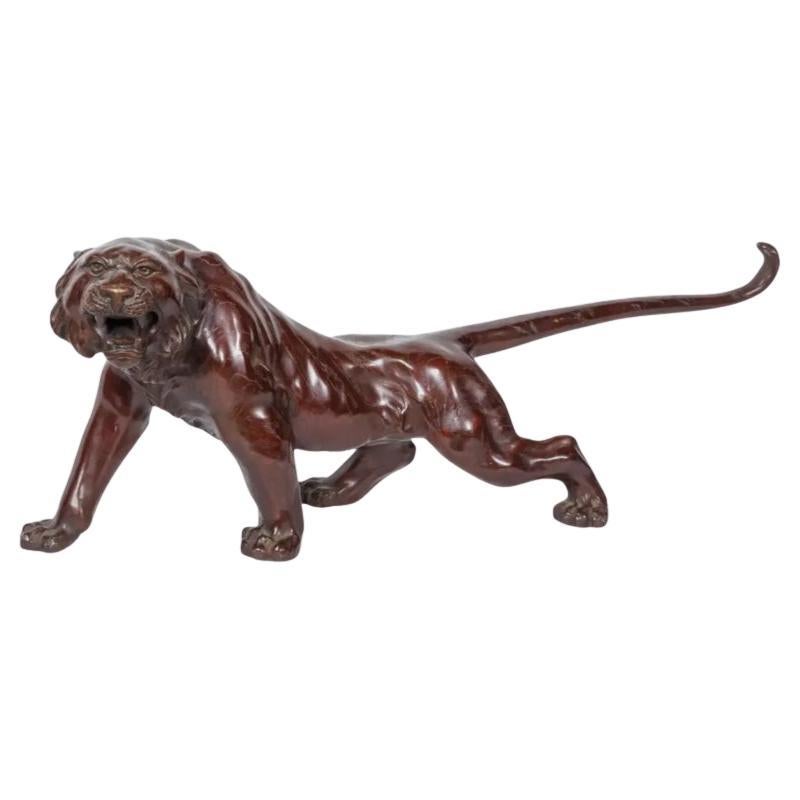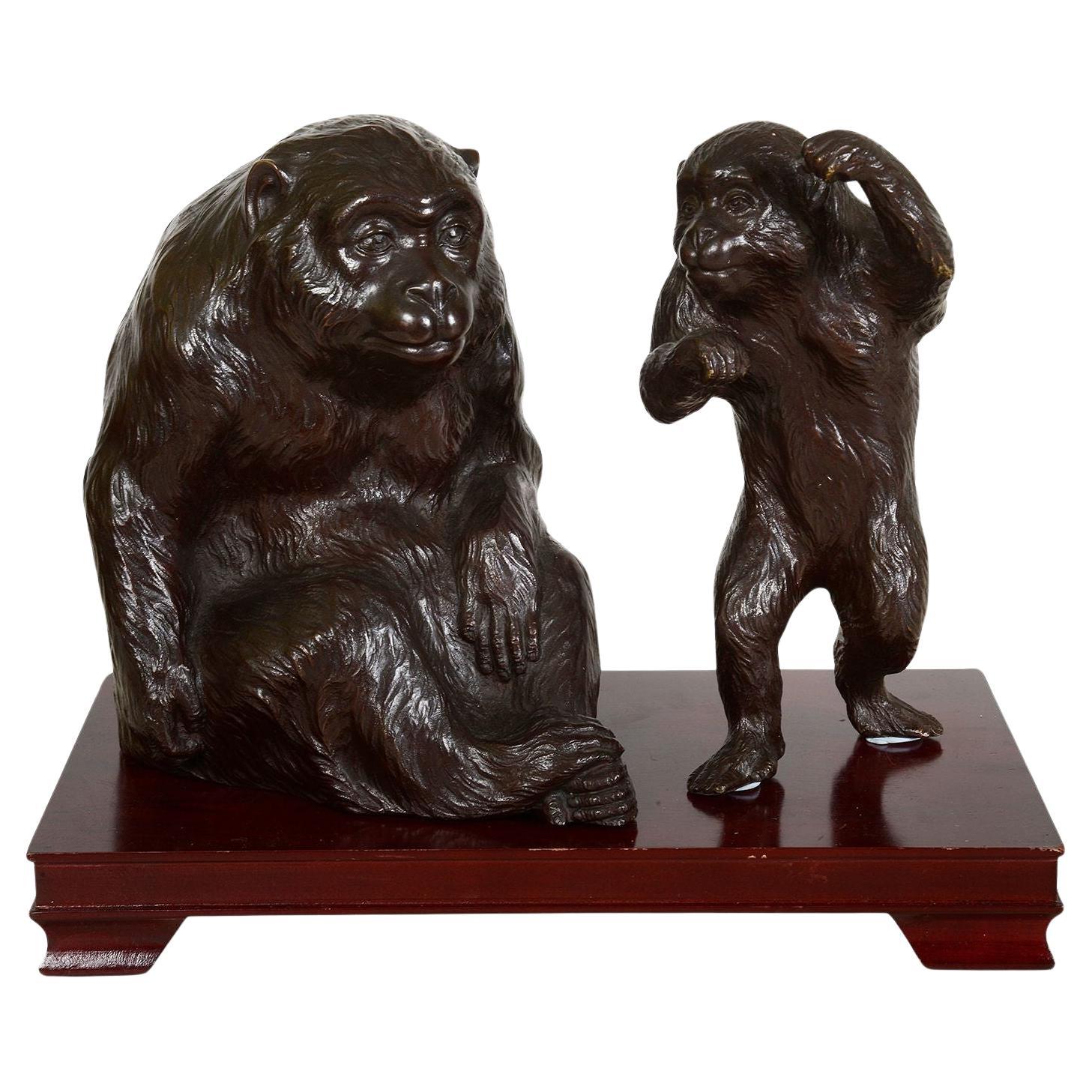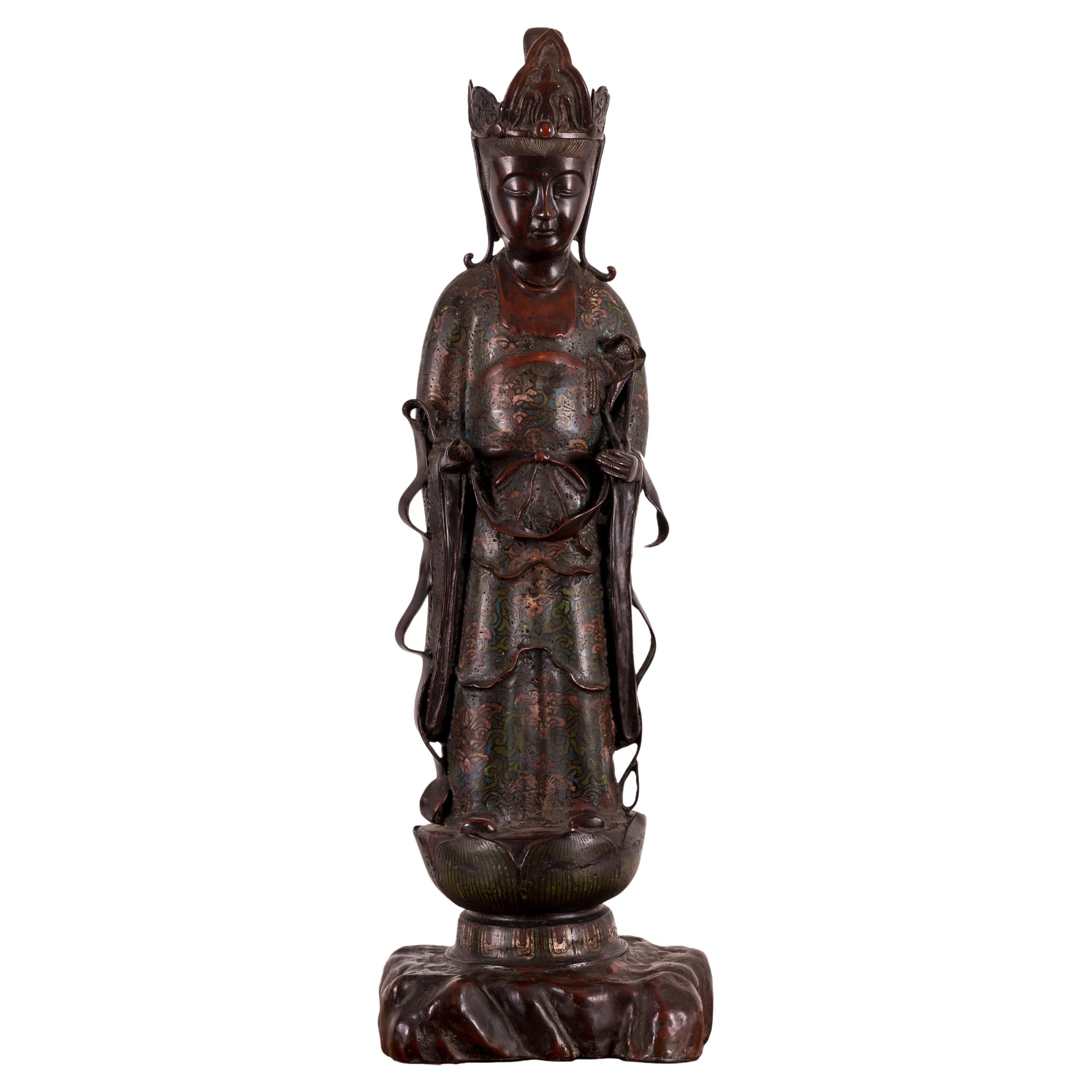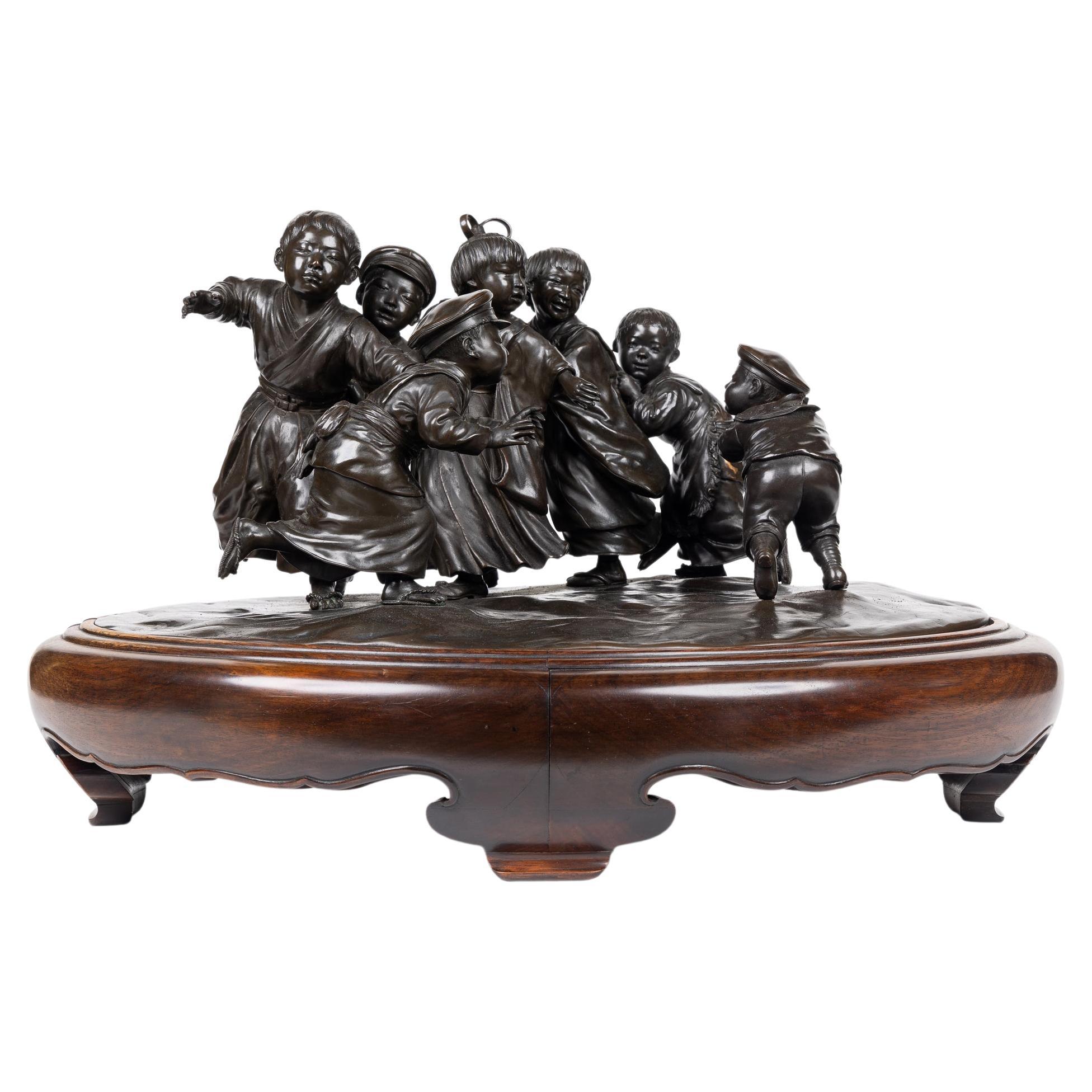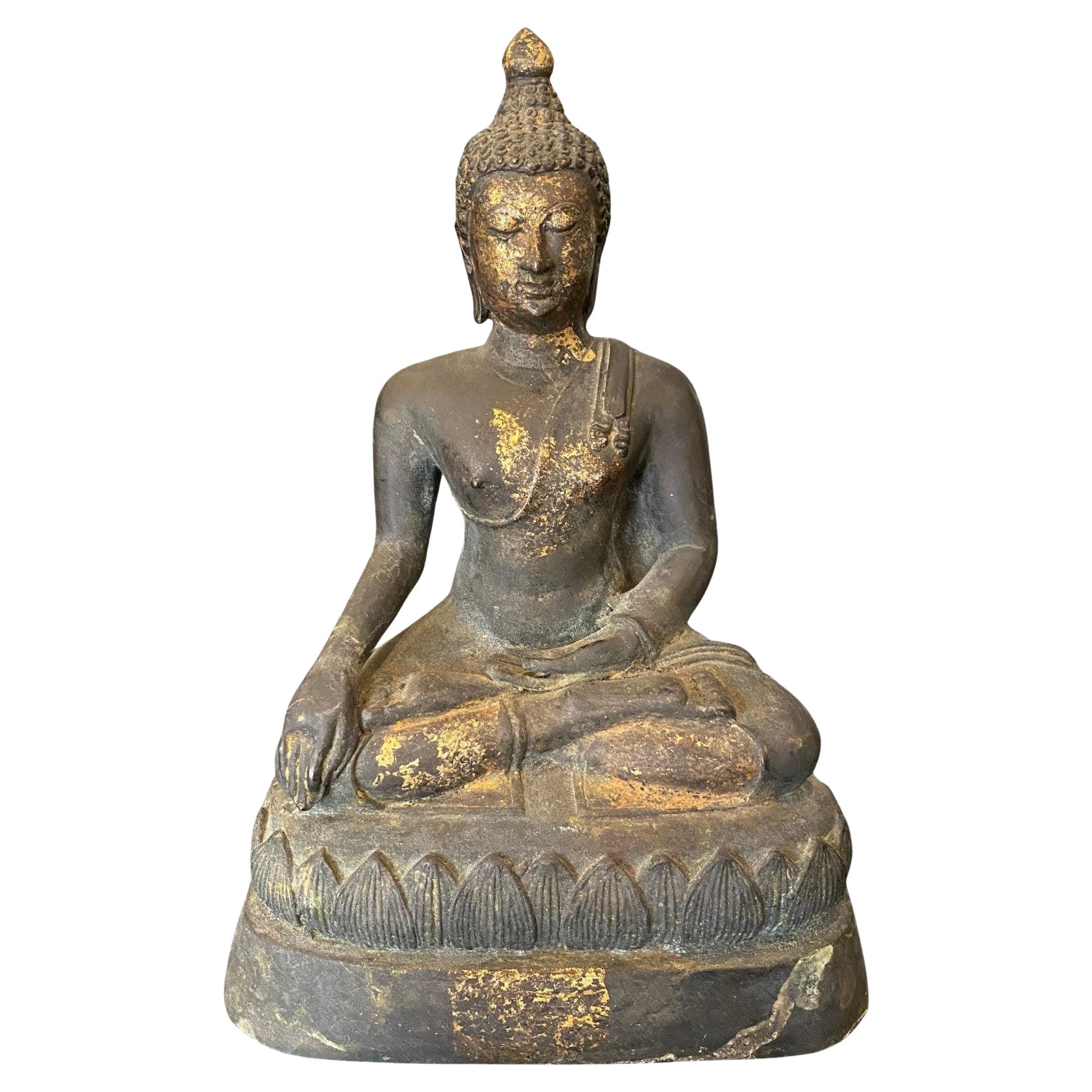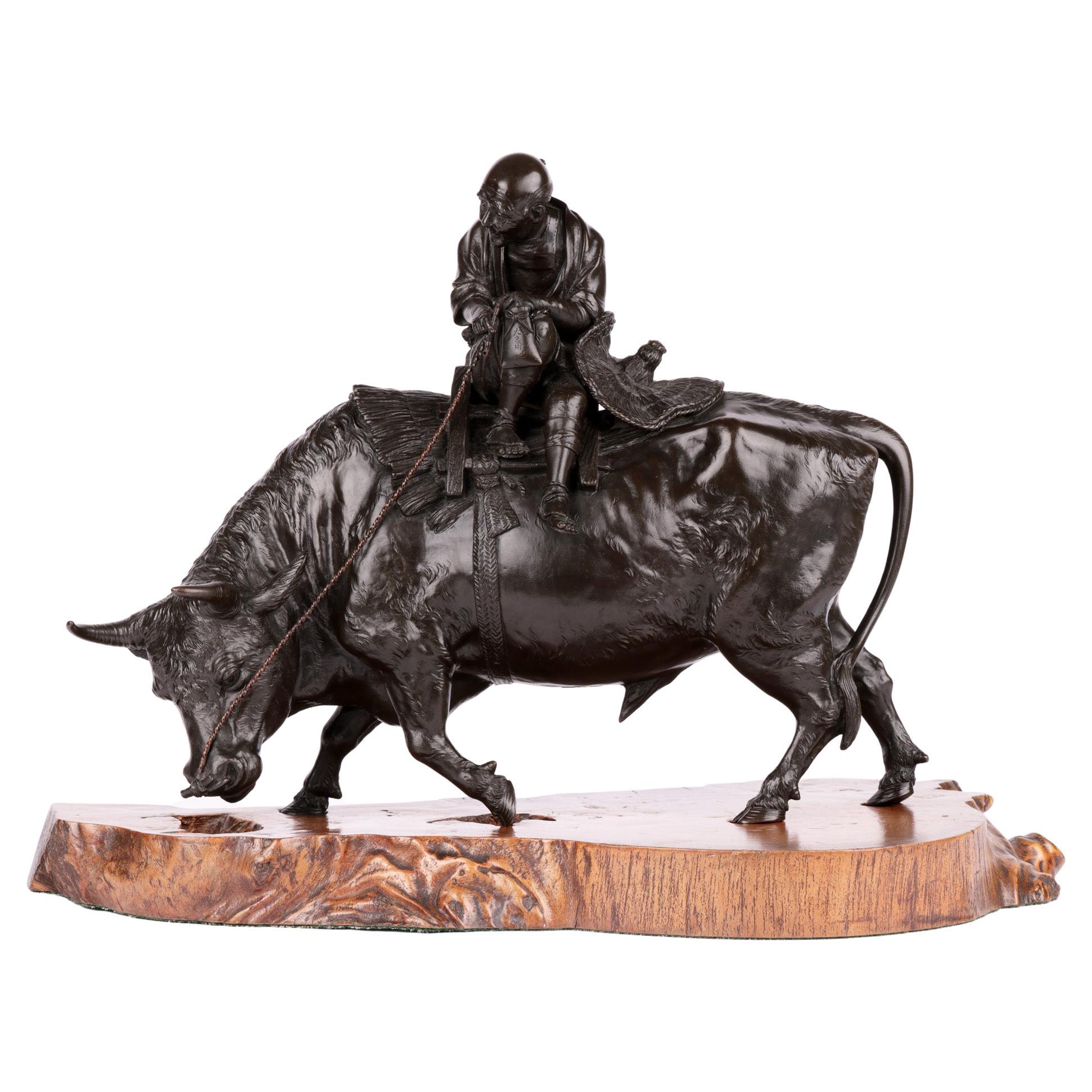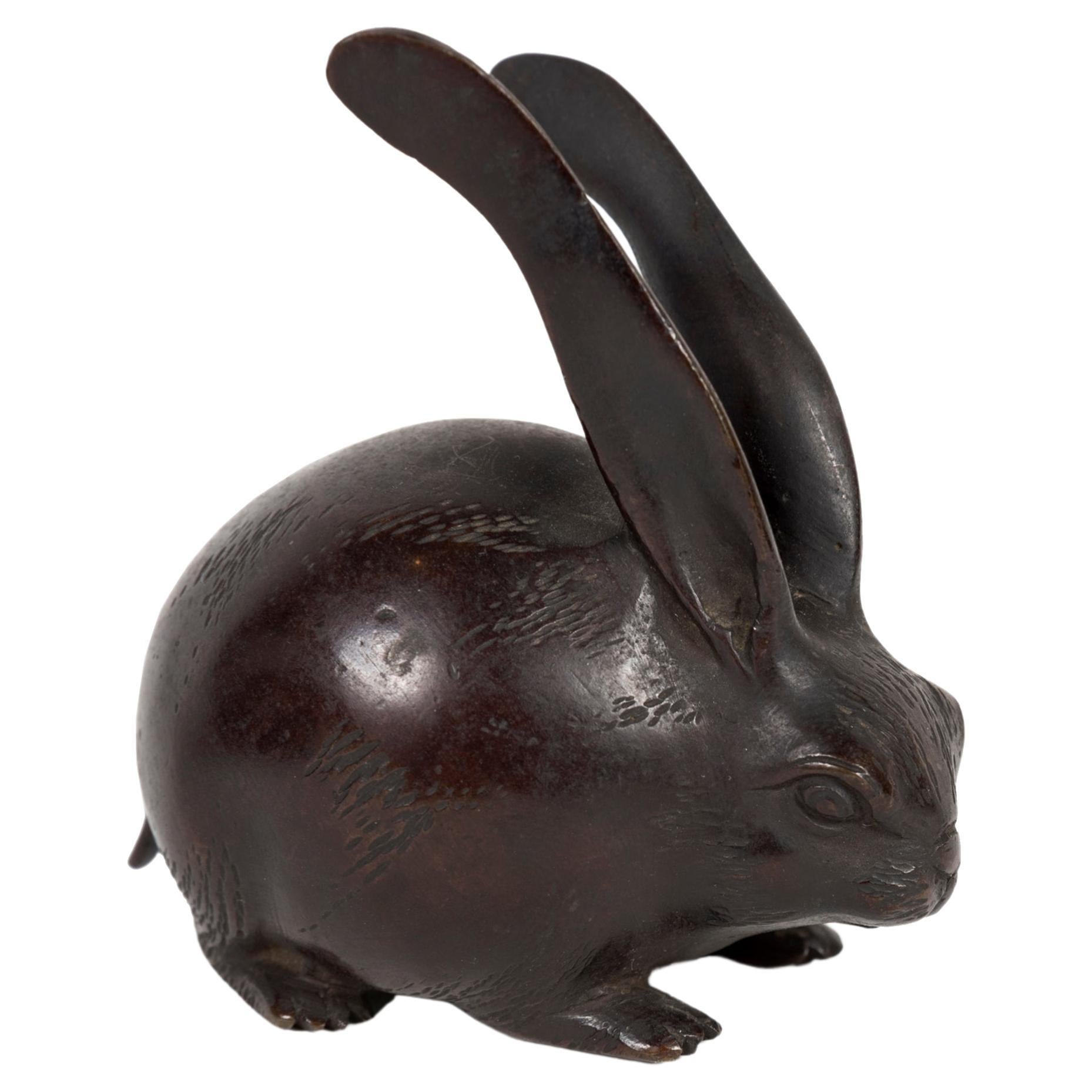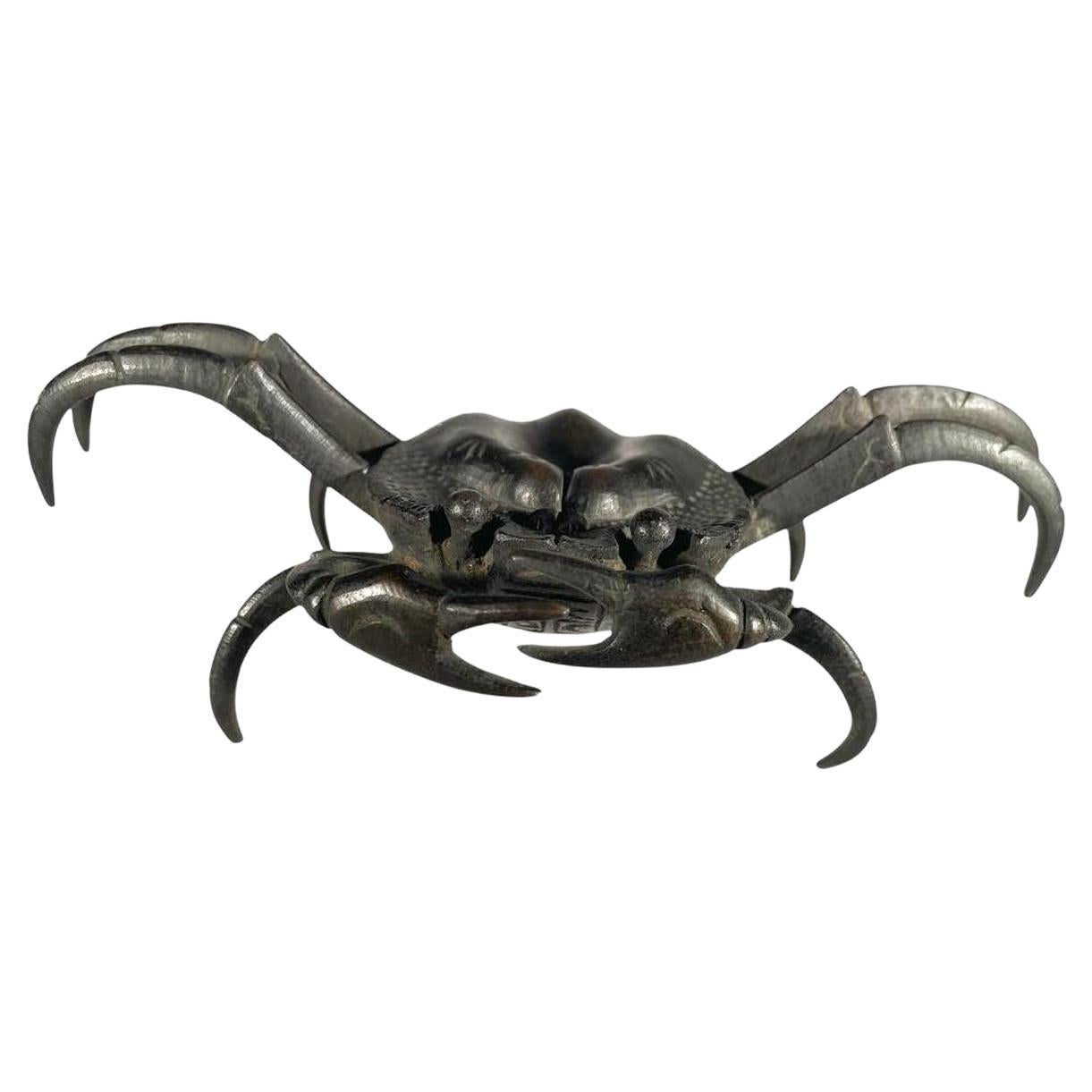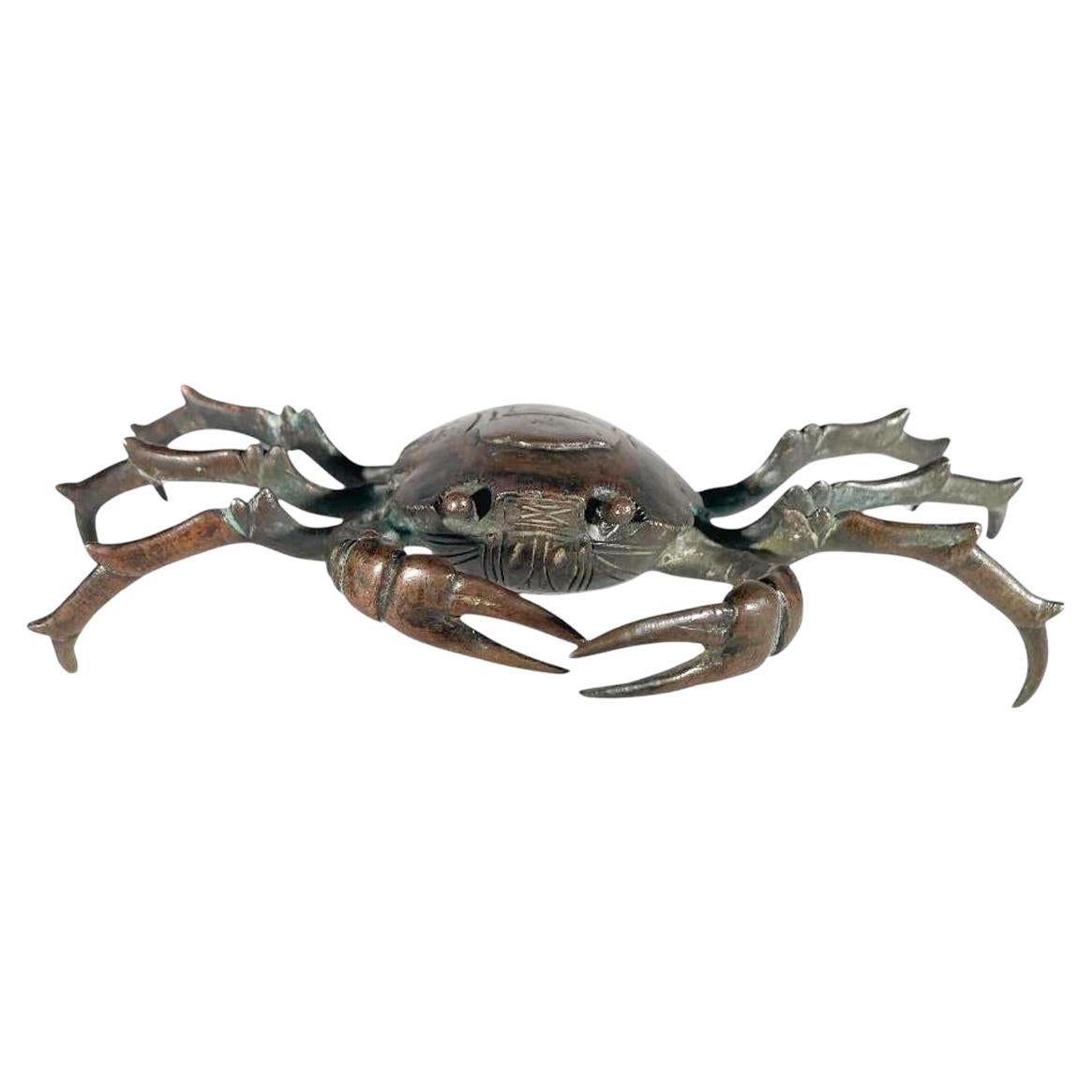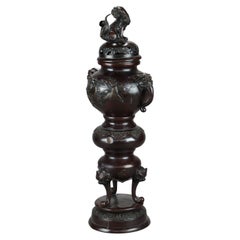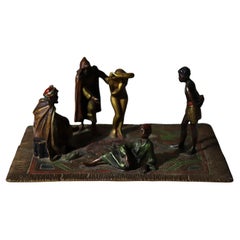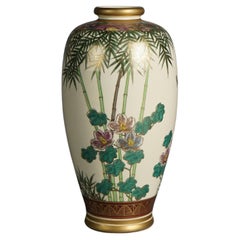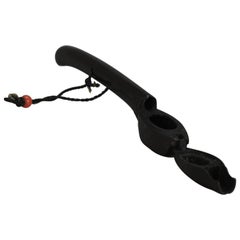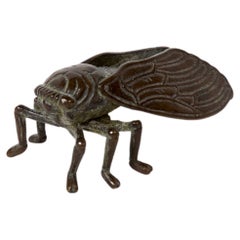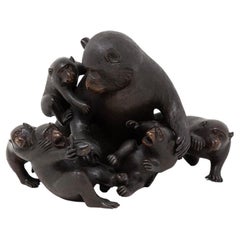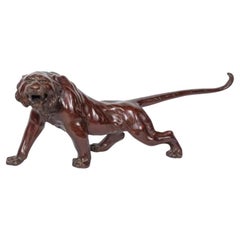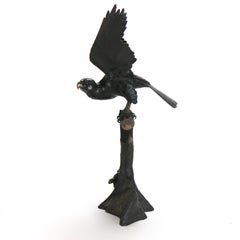
Antique Japanese Meiji Bronze Eagle on Branch Sculpture Unsigned C1910
View Similar Items
Want more images or videos?
Request additional images or videos from the seller
1 of 18
Antique Japanese Meiji Bronze Eagle on Branch Sculpture Unsigned C1910
$1,650List Price
About the Item
- Dimensions:Height: 25 in (63.5 cm)Width: 16.5 in (41.91 cm)Depth: 12 in (30.48 cm)
- Materials and Techniques:
- Place of Origin:
- Period:
- Date of Manufacture:C1910
- Condition:Wear consistent with age and use. Overall very good condition with possible small repairs; as photographed.
- Seller Location:Big Flats, NY
- Reference Number:Seller: 807621stDibs: LU2396344357952
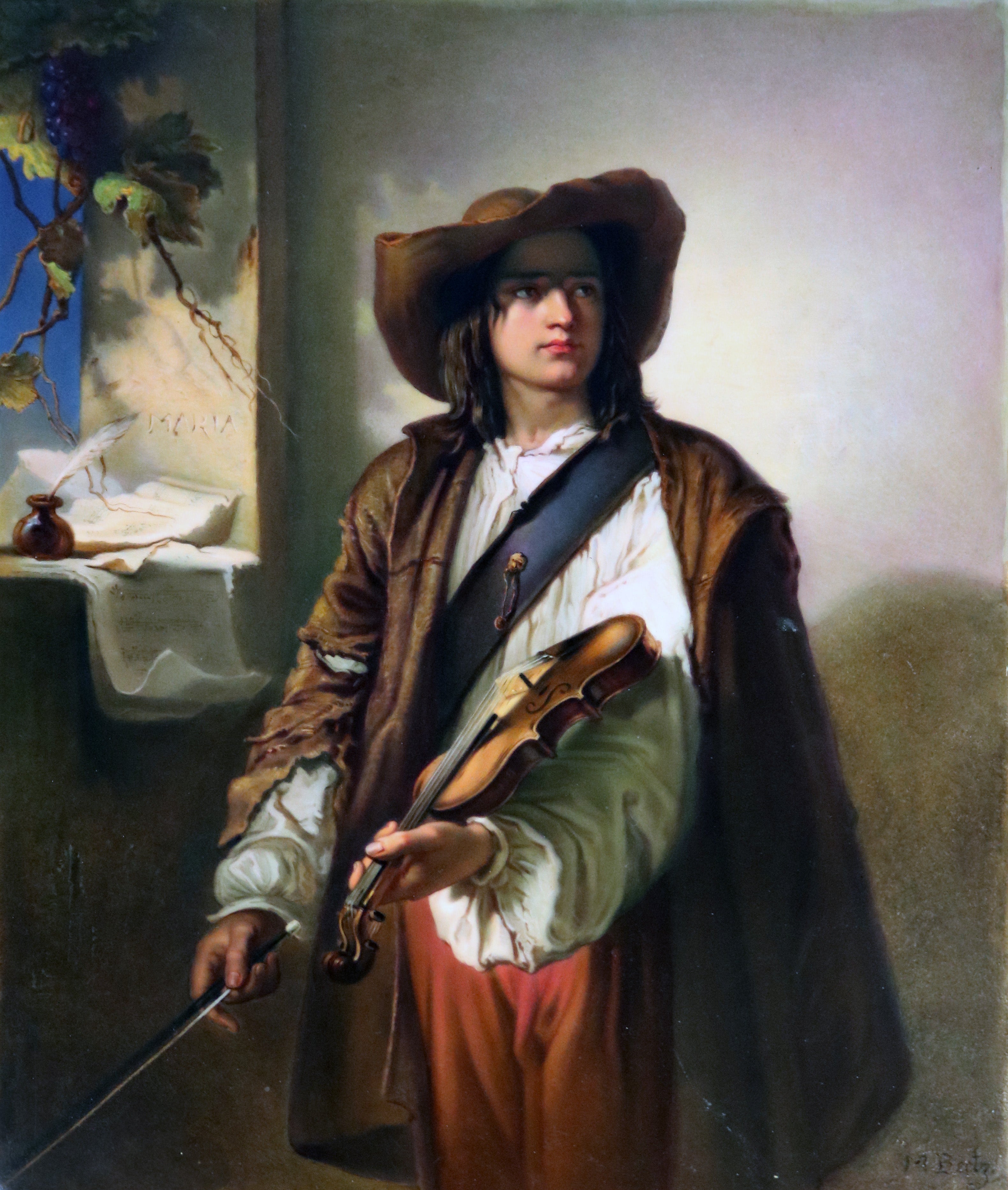
About the Seller
4.8
Gold Seller
Premium sellers maintaining a 4.3+ rating and 24-hour response times
1stDibs seller since 2016
2,749 sales on 1stDibs
Typical response time: 8 hours
Authenticity Guarantee
In the unlikely event there’s an issue with an item’s authenticity, contact us within 1 year for a full refund. DetailsMoney-Back Guarantee
If your item is not as described, is damaged in transit, or does not arrive, contact us within 7 days for a full refund. Details24-Hour Cancellation
You have a 24-hour grace period in which to reconsider your purchase, with no questions asked.Vetted Professional Sellers
Our world-class sellers must adhere to strict standards for service and quality, maintaining the integrity of our listings.Price-Match Guarantee
If you find that a seller listed the same item for a lower price elsewhere, we’ll match it.Trusted Global Delivery
Our best-in-class carrier network provides specialized shipping options worldwide, including custom delivery.More From This Seller
View AllAntique Japanese Meiji Classically Formed Bronze Vase, Signed, C1910
Located in Big Flats, NY
Antique Japanese Meiji Classically Formed Bronze Vase, Signed, C1910
Measures- 10.75"H x 7.25"W x 7.25"D
A classically formed bronze vase from the Japanese Meiji period, circa 1910...
Category
Early 20th Century Meiji Vases
Materials
Bronze
$520 Sale Price
20% Off
Antique Japanese Bronze Meiji Footed Censer with Figural Foo Dogs & Birds, 1900
Located in Big Flats, NY
An antique Japanese Meiji censer offers cast bronze construction with foo dog lid over bulbous vessel having band with birds and flanking handles with foo ...
Category
Early 20th Century Japanese Metalwork
Materials
Bronze
$960 Sale Price
20% Off
Antique Franz Bergman Cold Painted Bronze Figural Group Unsigned C1910
Located in Big Flats, NY
Antique Franz Bergman Cold Painted Bronze Figural Grouping Unsigned C1910 (2" x 4 1/2" x 3 1/8").
A figural grouping attributed to Franz Bergman, circa 1910. This piece features a...
Category
Antique Early 19th Century Figurative Sculptures
Materials
Bronze
$960 Sale Price
20% Off
Antique Japanese Meiji Satsuma Hand Painted & Gilt Porcelain Vase C1910
Located in Big Flats, NY
Antique Japanese Meiji Satsuma Hand Painted & Gilt Porcelain Vase with Flowers, Butterfly & Bamboo, C1910
This exquisite Satsuma vase from the Meiji period (circa 1910) showcases th...
Category
Early 20th Century Asian Meiji Ceramics
Materials
Porcelain
$440 Sale Price
20% Off
Antique Japanese Satsuma Meiji Floral & Gilt Decorated Porcelain Vase C1910
Located in Big Flats, NY
Antique Japanese Satsuma Meiji Hand Painted Floral & Gilt Decorated Porcelain Vase C1910
This exquisite Satsuma vase from the Meiji period, cir...
Category
Early 20th Century Japanese Porcelain
Materials
Porcelain
$440 Sale Price
20% Off
Antique Japanese Meiji Satsuma Porcelain Vase, Garden Scene & Pheasant, C1910
Located in Big Flats, NY
Antique Japanese Meiji Satsuma Porcelain Vase, Garden Scene & Pheasant, C1910
This exquisite Satsuma porcelain vase from the Meiji period (circa 1910) features a beautifully detaile...
Category
Early 20th Century Japanese Meiji Vases
Materials
Porcelain
$440 Sale Price
20% Off
You May Also Like
Antique Japanese Bronze Hatate 19th C Meiji Inkpot Japan Unsigned
Located in Amsterdam, Noord Holland
Lovely and very detailed piece. .
If someone were to bring up the topic of Japanese antiques, what images would come to your mind? Kimono? Swords? Armor? Possibly netsuke? A few might even know what an inro is. How about the yatate?
I have shown a yatate to many of my Japanese acquaintances here in Tokyo, and was surprised to discover that most did not even know what it was! Artists and calligraphers usually knew right away, though.
A yatate (pronounced yah-tah-teh) is a Japanese portable writing set. The yatate has been around since the Kamakura period (1185-1333). It contains a traditional Japanese bamboo brush and an ink pot filled with cotton or silk which holds liquid sumi ink.
Yatate literally means "arrow Stand."
The Japanese traditional way of writing is with a brush (fude) and ink (sumi). Before the invention of the yatate, whenever anyone wanted to write or draw in ink, he had to make his own ink by grinding the ink stick...
Category
Antique 19th Century Japanese Sculptures and Carvings
Materials
Bronze
$572 Sale Price
20% Off
Japan bronze cicada sculpture okimono Meiji
Located in PARIS, FR
Bronze sculpture with dark brown patina of a cicada.
The cicada (in Japanese, semi) is considered as a symbol of humanity. Together with a praying mantis and a spider, they represen...
Category
Antique Late 19th Century Japanese Japonisme Sculptures and Carvings
Materials
Bronze
Japanese Meiji Period Bronze Monkey Group Sculpture Okimono Shosai
Located in Newark, England
Featuring Seven Japanese Macaques
Form our Japanese collection, we are delighted to offer this Japanese Bronze Monkey Group by Shosai. The Japanese Bronze Group displaying a male father monkey and his infants playing around and being mischievous with Persimmon fruit. The monkeys modelled as Japanese macaque monkeys (snow monkey). The bronze okimono is beautifully patinated with a highly lifelike and naturalistic casting signed to the underside Shosai 正齊鋳. The Bronze group dates to the Meiji Period (1868-1912) circa 1885.
Japanese macaque (snow monkey) is a terrestrial Old World monkey species that is native to Japan. They are known as snow monkeys because some live in areas where snow covers the ground for long periods each year hence their nickname. No other non-human primate lives further north or in a colder climate than the snow monkey. Individuals have brownish grey fur, pinkish-red faces, and short tails. Two subspecies are known and their conservation Status is of least concern. In Japan, the species is known as Nihonzaru ニホンザル, 日本 (Japan/Nihon) and saru 猿 (monkey) to distinguish it from other primates, but the Japanese macaque is the only species of monkey in Japan.
The Japanese macaque features heavily in the religion, folklore, and art of Japan, as well as in proverbs and idiomatic expressions in the Japanese language. They are often seen in paintings, block prints and represented in all manner of carvings from Okimono to netsuke. Many of these art forms reside in the world’s most famous museums and collections, some of the most prominent pieces by artists such as Mori Sosen and Kawanabe Kyosai. In Shinto belief (Japan’s indigenous religion/nature religion) legendary mythical beasts known as raiju sometimes appeared as monkeys and kept Raijin (the god of lightning/storms) company. In another well known tale the three wise monkeys who warn people to “see no evil, hear no evil and speak no evil” can be seen depicted in relief over the door of the famous Tosho-gu shrine in Nikko.
Meiji Period was an era of Japanese history that spanned from 1868 to 1912. It was the first half of the Empire of Japan, when the Japanese people began to build a paradigm of a modern, industrialised nation state and emergent great power, influenced by Western countries and aesthetics. As a result of radically different ideas, the changes to Japan were profound and it affected the social structure, politics, economy, military, and foreign relations across the board. The period corresponded to the reign of Emperor Meiji and was preceded by the Keio era and was succeeded by the Taisho era.
Cultural Art during the Meiji Period was of particular interest to the government and they overhauled the art export market which in turn promoted Japanese arts via various world’s fairs, beginning in Vienna at the world fair in 1873. The government heavily funded the fairs and took an active role organising how Japan’s culture was presented to the world including creating a semi-public company named Kiritsu Kosho Kaisha (First Industrial Manufacturing Company). The Kiritsu Kosho Kaisha was used to promote and commercialise exports of Japanese art and established the Hakurankai Jimukyoku (Exhibition Bureau) to maintain quality standards. For the 1876 Centennial International Exhibition in Philadelphia, the Japanese government created a Centennial Office and sent a special envoy to secure space for the 30,000 items that would be displayed. The Imperial Household also took an active interest in arts and crafts, commissioning works by select artists to be given as gifts for foreign dignitaries further emphasising the high quality and importance of Japanese art. Just before the end of the 19th century in 1890, the Teishitsu Gigeiin (Artist to the Imperial Household) system was created to recognise distinguished artists. These artists were selected for their exceptionally high quality wares and talent in their own industry. Over a period of 54 years Seventy artists were appointed, amongst these were ceramicist Makuzu Kozan and cloisonné enamel artist...
Category
Antique Late 19th Century Japanese Meiji Sculptures and Carvings
Materials
Bronze
A Massive Japanese Patinated Bronze Sculpture of a Tiger, Meiji Period
Located in Long Island City, NY
A Massive Japanese Patinated Bronze Sculpture of a Tiger, Meiji Period. Signed.
Measuring an impressive 44 inches in length, this extraordinary sculpture is a striking example of t...
Category
Antique 19th Century Japanese Meiji Sculptures and Carvings
Materials
Bronze
Meiji period Japanese bronze Monkeys.
Located in Brighton, Sussex
These exquisite Japanese Meiji period sculptures depict two patinated bronze monkeys, showcasing the artistry and craftsmanship of the era. The larger monkey, seated with a contempla...
Category
Antique Late 19th Century Japanese Sculptures and Carvings
Materials
Bronze
Japanese Meiji Champlevé Bronze Kannon Figure
Located in Savannah, GA
Japanese champlevé bronze Kannon Bodhisattva Avalokiteshvara figure, Meiji period.
9 ¾ inches wide by 8 inches deep by 29 ½ inches tall
Category
Antique Late 19th Century Japanese Meiji Sculptures and Carvings
Materials
Bronze
Recently Viewed
View AllMore Ways To Browse
Meiji Bronze Eagle
Lotus Flower Sculpture
Carved Wood Deity
Japanese Monkey
Monkey Japan
Chinese Temple Carvings
Thai Wood Carving
Thailand Wood Carvings
Chinese Guanyin
Chinese Hand Carved Bamboo
Gilt Wood Buddha
Japanese Wood Bear
Netsukes
Chinese Soapstone
Chinese Stone Statue
Soapstone Chinese Furniture
Asian Bird Box
Japanese Koi
